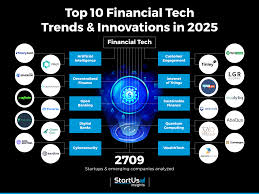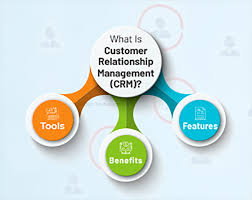Introduction
The financial sector has undergone a profound transformation driven by rapid advancements in digital technology. In 2024, this digital transformation continues to reshape the industry, altering how financial services are delivered, how institutions operate, and how customers interact with their finances. This transformation is not just a trend but a necessity for survival in an increasingly competitive and globalized market. As we delve into the 101 effects of digital transformation in the financial sector, it’s essential to understand its implications, the opportunities it presents, and the challenges it poses.
Overview
Digital transformation in the financial sector encompasses the integration of technology into every aspect of financial services. This includes automation, data analytics, cybersecurity, customer experience, product innovation, regulatory compliance, and workforce management. Financial institutions, from traditional banks to emerging fintech companies, are leveraging technologies such as artificial intelligence (AI), blockchain, big data, and cloud computing to enhance efficiency, improve customer satisfaction, and drive innovation.
Importance
The importance of digital transformation in the financial sector cannot be overstated. It enables institutions to remain competitive by offering more personalized, faster, and efficient services. Customers demand seamless, 24/7 access to financial services, and digital solutions meet these expectations. Additionally, digital transformation allows financial institutions to reduce operational costs, enhance security, comply with regulatory requirements more effectively, and tap into new revenue streams. In essence, it is the backbone of modern financial services, driving both growth and innovation.
Pros
- Enhanced Customer Experience: Digital tools allow for highly personalized and convenient services.
- Increased Efficiency: Automation reduces human error and speeds up processes.
- Cost Reduction: Digital operations are often less costly than traditional methods.
- Innovation in Financial Products: Technology enables the creation of new financial products and services.
- Improved Security: Advanced cybersecurity measures protect against threats.
- Greater Financial Inclusion: Digital platforms provide services to underserved populations.
Cons
- Cybersecurity Risks: Increased digitalization leads to a higher risk of cyber-attacks.
- Regulatory Challenges: Rapid technological change can outpace regulatory frameworks.
- Job Displacement: Automation may reduce the need for certain jobs in the sector.
- Dependence on Technology: Over-reliance on digital tools can be risky if systems fail.
- Data Privacy Concerns: The collection and use of large amounts of data raise privacy issues.
- Initial Investment Costs: Transitioning to digital platforms requires significant upfront investment.
1-10: Enhanced Customer Experience
- Personalized Banking Services: Use of AI to tailor financial products to individual customer needs.
- 24/7 Customer Support: Chatbots and virtual assistants offer round-the-clock service.
- Omnichannel Experience: Seamless interaction across mobile, web, and in-person banking.
- Improved User Interfaces: More intuitive and user-friendly banking apps.
- Faster Loan Approvals: Automated underwriting processes.
- Instant Payments: Real-time payment processing.
- Enhanced Mobile Banking: Comprehensive services via smartphones.
- Custom Alerts: Personalized notifications for account activities.
- Financial Education Tools: Interactive tools for better financial literacy.
- Loyalty Programs: Personalized rewards and benefits for customers.
11-20: Automation and Efficiency
- Robotic Process Automation (RPA): Automation of routine tasks, reducing human error.
- AI-Powered Analytics: Data-driven insights for decision-making.
- Automated Compliance Monitoring: Real-time monitoring of regulatory compliance.
- Streamlined Onboarding: Faster customer onboarding with digital ID verification.
- Reduced Operational Costs: Lower costs due to automation and digitization.
- Smart Contracts: Automated contract execution in blockchain.
- Digital Loan Processing: Faster loan disbursements with automated workflows.
- Efficient Fraud Detection: AI-based systems identifying fraudulent activities.
- Improved Asset Management: AI tools for better portfolio management.
- Seamless Back-office Operations: Enhanced efficiency in internal processes.
21-30: Innovation in Financial Products
- Cryptocurrency Adoption: Broader integration of digital currencies in traditional banking.
- Blockchain-based Transactions: Increased use of blockchain for secure transactions.
- Decentralized Finance (DeFi): Growth of DeFi platforms challenging traditional banking.
- Tokenized Assets: Fractional ownership of assets via tokenization.
- Green Finance: Digital platforms promoting sustainable investment options.
- Micro-investing Platforms: Easier access to investments with minimal capital.
- Robo-advisors: Automated, algorithm-driven financial planning services.
- Buy Now, Pay Later (BNPL): Expanding as an alternative to traditional credit.
- Peer-to-Peer (P2P) Lending: Growth in P2P platforms offering loans.
- Crowdfunding: Digital platforms for collective funding of ventures.
31-40: Data and Analytics
- Big Data Utilization: Leveraging big data for better customer insights.
- Predictive Analytics: Forecasting customer needs and market trends.
- Data-Driven Marketing: Personalized marketing based on customer data.
- Behavioral Analytics: Understanding customer behavior for better service.
- Customer Sentiment Analysis: Real-time analysis of customer feedback.
- Risk Management: Enhanced risk assessment with advanced analytics.
- Credit Scoring Models: AI-driven credit scoring systems.
- Enhanced Reporting: Real-time financial reporting and analytics.
- Data Monetization: New revenue streams through data insights.
- Regulatory Reporting: Automated and accurate compliance reporting.
41-50: Cybersecurity
- Advanced Threat Detection: AI-based cybersecurity systems.
- Zero Trust Architecture: More secure access control protocols.
- Multi-factor Authentication (MFA): Enhanced security for user accounts.
- Biometric Authentication: Use of fingerprints, facial recognition, etc.
- Blockchain for Security: Secure transaction records with blockchain.
- End-to-End Encryption: Improved data privacy and security.
- Secure APIs: Robust security for API integrations.
- Cyber Resilience: Enhanced ability to withstand and recover from cyber-attacks.
- Cloud Security: Advanced security measures for cloud-based banking services.
- Threat Intelligence Sharing: Collaboration across institutions for threat detection.
51-60: Regulatory Compliance
- RegTech Adoption: Use of technology for regulatory compliance.
- Real-time Monitoring: Continuous compliance checks.
- GDPR Compliance: Ensuring data privacy and protection.
- AML and KYC Automation: Automated Anti-Money Laundering (AML) and Know Your Customer (KYC) processes.
- Regulatory Sandboxes: Innovation with oversight in controlled environments.
- Digital Identity Verification: Secure and fast customer identification.
- Compliance Reporting: Automated and real-time compliance reporting.
- Audit Trails: Immutable records for easier audits.
- Risk-Based Compliance: AI-driven risk assessments for compliance.
- Cross-border Compliance: Tools to manage international regulatory requirements.
61-70: Ecosystem and Partnerships
- Open Banking: Increased collaboration between banks and fintech companies.
- API Economy: Expansion of financial services through APIs.
- Fintech Partnerships: Collaborations for innovative product development.
- Platform Banking: Banks are platforms offering third-party services.
- Integration with E-commerce: Seamless payment solutions for online shopping.
- Banking-as-a-Service (BaaS): Banks offering their infrastructure to third parties.
- Embedded Finance: Financial services integrated into non-financial platforms.
- Cloud Banking: Migration to cloud-based infrastructure.
- Digital Wallets: Partnerships enabling mobile payment solutions.
- Cross-industry Collaborations: Financial services merging with other sectors (e.g., tech, retail).
71-80: Customer Trust and Transparency
- Transparency in Fees: Clear and understandable fee structures.
- Data Privacy Enhancements: Greater emphasis on protecting customer data.
- Trust through Blockchain: Immutable transaction records.
- Real-time Account Visibility: Customers can see their transactions in real-time.
- Proactive Fraud Alerts: Immediate alerts to potential fraud.
- Sustainable Banking Practices: Transparency in environmental impact.
- Ethical AI Use: Transparent AI algorithms in decision-making.
- Fair Lending Practices: AI ensuring non-discriminatory lending.
- Customer Control of Data: Empowering customers to manage their data.
- Transparent Reporting: Clear and accessible financial reporting.
81-90: Workforce Transformation
- Upskilling Employees: Training programs for digital skills.
- Remote Work: Increased adoption of remote working in banking.
- AI-Augmented Workforce: Employees working alongside AI tools.
- Agile Methodologies: Agile practices in financial product development.
- Diverse Teams: Emphasis on diversity in fintech.
- Human-AI Collaboration: Enhanced collaboration between humans and AI.
- Flexible Work Environments: Emphasis on work-life balance with flexible schedules.
- Culture of Innovation: Fostering innovation through digital tools.
- Talent Acquisition: Attracting digital talent to financial institutions.
- Digital Leadership: Leadership roles focused on digital strategy.
91-101: Broader Industry Impacts
- Globalization of Financial Services: Cross-border services and products.
- Financial Inclusion: Digital platforms providing services to the unbanked.
- New Revenue Streams: Monetization through digital channels.
- Market Disruption: Traditional banks facing competition from fintech startups.
- Digital-only Banks: Rise of banks operating solely online.
- Sustainable Investments: Growth of ESG (Environmental, Social, Governance) investing.
- Increased Mergers and Acquisitions: Consolidation in the fintech space.
- Economic Growth: Digital finance driving economic growth.
- Real-time Settlements: Faster settlement of transactions.
- Customer Empowerment: More control and choice for customers.
- Continuous Innovation: Ongoing technological advancements shaping the industry.
Summary
The digital transformation of the financial sector in 2024 is characterized by the integration of advanced technologies into every aspect of financial services. This shift brings numerous benefits, including enhanced customer experiences, increased efficiency, and the creation of innovative financial products. However, it also introduces challenges, such as cybersecurity risks, regulatory complexities, and potential job displacement. As the financial sector continues to evolve, institutions must navigate these pros and cons to remain competitive and meet the changing needs of their customers.
Conclusion
Digital transformation is not just an option but a critical strategy for financial institutions in 2024. It is driving significant changes across the industry, enabling institutions to offer better services, operate more efficiently, and innovate continuously. However, this transformation also comes with its set of challenges, which must be managed carefully to ensure long-term success. As the financial sector moves forward, the ability to adapt to and leverage digital technologies will determine the winners and losers in this rapidly changing landscape.
Thank You
Thank you for taking the time to explore the 101 effects of digital transformation in the financial sector in 2024. This journey through the opportunities and challenges of digitalization highlights the importance of staying informed and adaptable in an industry that is continuously evolving. Your interest in this topic is a testament to the crucial role that digital transformation plays in shaping the future of finance.




.jfif)
.png)
.png)












